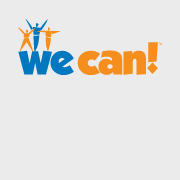Principal Chief of the Cherokee Nation of Oklahoma Signs Agreement with We Can!®

July 18, 2009
Over the past 300 years, the Cherokee have participated in at least 36 treaties. Now, they have another agreement to add to the list—a pledge to become an American Indian We Can! Nation.
On October 6, 2008, Cherokee Nation of Oklahoma Principal Chief Chad Smith proclaimed that his tribe would continue its leadership role in offering health and wellness programs to tribal members through a new partnership with We Can!
"Cherokee Nation will strengthen its efforts to create a healthier community through We Can! trainings and resources, including evidence-based obesity prevention programs for parents, caregivers and youth, in collaboration with community-based partners," stated the Chief's proclamation.
And the training has already begun.
“You have to teach this generation that ‘Yes, you might eat that at home, but it’s not the healthiest choice,’” says Karen Thomas, United Native American Leadership Initiative Mentoring Director at the Maryetta School in Stillwell, Oklahoma and We Can! training participant.
Thomas, like one-third of her students, is of American Indian heritage. She knows firsthand the dangers that a poor diet—and sedentary habits—can hold. That's why she joined other teachers and healthcare professionals at a special We Can! training during the Cherokee Nation's annual policy conference this April.
"American Indian communities have high numbers, and an increased risk of children becoming overweight, because of a complex mix of historical, cultural, racial, and societal factors," says Rachael L. Tracy, M.P.H., Public Health Advisor, National Heart, Lung, and Blood Institute. "But there are things we can do to help curb this disparity, and to help our communities address this epidemic."
Partnering with the second largest Indian tribe in the United States is a great start.
With 280,847 members, nearly 109,001 of whom live in the tribe's 7,000 square-mile jurisdictional area in northeastern Oklahoma, Cherokee Nation's partnership with We Can! will affect many lives.
Principal Chief Smith has already committed to creating awareness of We Can! curricula and messaging not only through the trainings, but also by integrating We Can! into existing health programs such as the tribe's Healthy Nation initiative; publishing We Can! messages and tip sheets in the Cherokee Phoenix, the tribe’s newspaper; profiling We Can! on its website; and more.
Rachael Tracy, who presented two Parent Program sessions at the training and is a member of the Navajo Nation, was encouraged by the reaction of the participants upon learning about We Can!
“Participants were passionate about the idea of combating obesity in their community,” reports Tracy. “We had a long discussion about cultural perceptions of weight, including the social acceptance of heavier body types in some communities. Participants acknowledged that educating communities about what a healthy weight is and what is considered overweight may be very challenging.”
For Karen Thomas, bridging that gap by working through kids to reach the parents is a critical part of the equation.
"It's got to start with the kids, because they can motivate their parents by saying 'Mom, don't eat that!'," says Thomas. "They may seem like small things, but small changes can make a big difference down the line."





